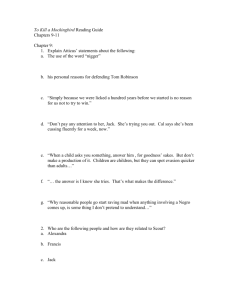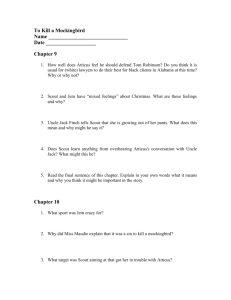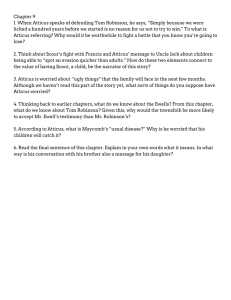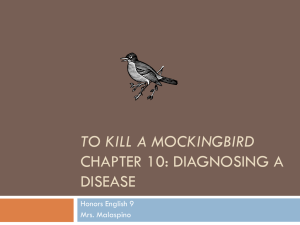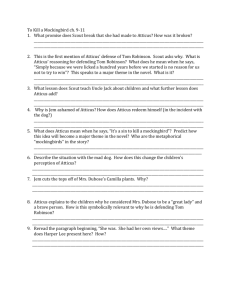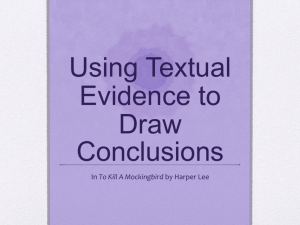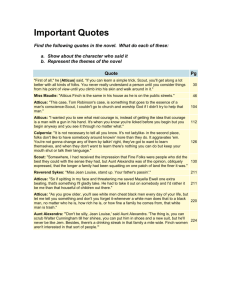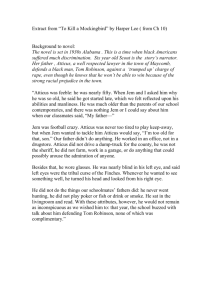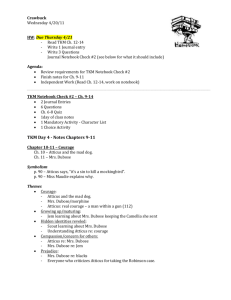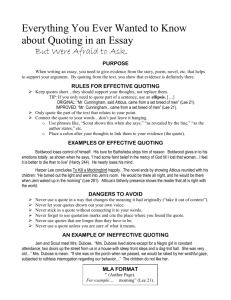Previewing the Unit
advertisement
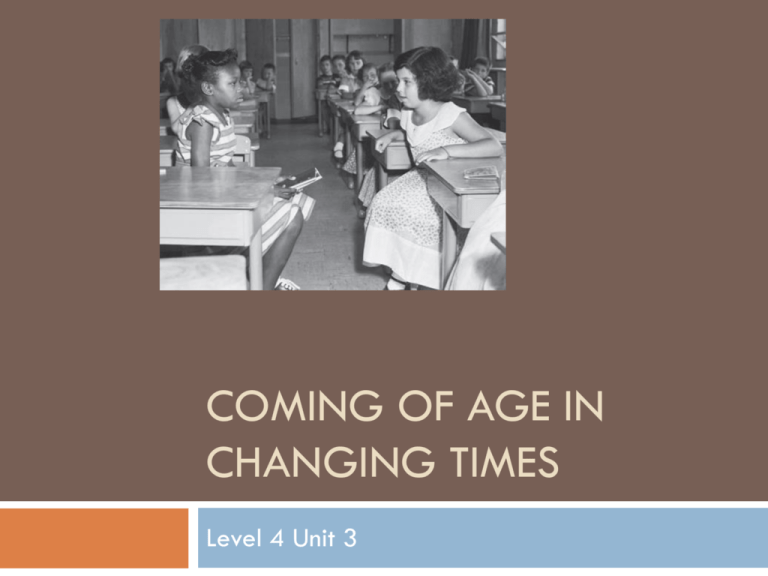
COMING OF AGE IN CHANGING TIMES Level 4 Unit 3 3.15 Pin the Quote on Atticus Learning Targets Write an interpretive statement about the significance of literary elements. Gather textual evidence to generate theme statements. Respond to an analytical writing prompt. 3.15 Pin the Quote on Atticus After Reading Chapter 11 (225) 3. Consider the significance of character, conflict, and setting in the passage you just read and annotated. Ask yourself: Why is this literary element important? How does it connect to the larger issues in the novel? Use the following sentence stems to generate an interpretive statement about each of these elements. The character of Mrs. Dubose represents . . . The conflict between the children and Mrs. Dubose is similar to . . . The setting of Mrs. Dubose’s house, halfway between the Finch home and the town, is significant because . . . 3.15 Pin the Quote on Atticus After Reading Chapter 11 (225) 4. In the following quotation, Atticus gives Jem advice on how to deal with Mrs. Dubose. Consider how this advice might foreshadow the way Atticus wants the children to act during the trial. “You just hold your head high and be a gentleman. Whatever she says to you, it’s your job not to let her make you mad.” Rewrite Atticus’s advice as a statement or “life lesson.” 3.15 Pin the Quote on Atticus After Reading Chapter 11 (226) As a table group, find several other quotes and life lessons from Atticus. 7. Use the quotes to identify themes based on the lessons Atticus wants his children to learn as they come of age. Create a web of these and other themes Harper Lee explores in Part One of To Kill a Mockingbird. 3.15 Pin the Quote on Atticus Writing Prompt (226) Analyze how character, conflict, or setting contribute to a “coming of age” theme in Chapter 11. Be sure to: Begin with a topic sentence that connects your chosen literary element to a theme. Include textual evidence in the form of direct quotations from Chapter 11. Provide commentary explaining how your quotes support your analysis. Use the TLQC (Transition, Lead-in, Quote, Commentary) method to integrate your quotes, with commentary, in a literary analysis essay.
